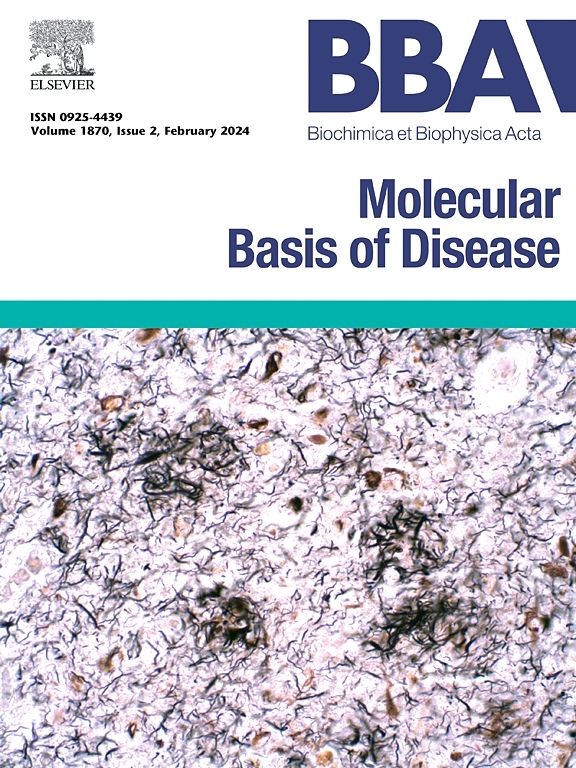Engineering a three-dimensional liver steatosis model
IF 4.2
2区 生物学
Q2 BIOCHEMISTRY & MOLECULAR BIOLOGY
Biochimica et biophysica acta. Molecular basis of disease
Pub Date : 2025-05-05
DOI:10.1016/j.bbadis.2025.167888
引用次数: 0
Abstract
Liver transplantation is the key treatment for liver failure, yet organ scarcity, exacerbated by high discard rates of steatotic livers, leads to high waitlist mortality. Preclinical models of steatosis are necessary to understand the pathophysiology of the disease and to develop pharmacological interventions to decrease disease burden and liver discard rate. In this paper, we develop an expedited 3D steatotic organoid model containing primary human hepatocytes and non-parenchymal cells. We present our iterative approach as we transition from 2D to 3D models and from immortalized to primary cells to optimize conditions for the development of a 3D human steatosis model. Both primary cell aggregation and steatosis induction time were reduced from the standard, 5–7 days, to 2 days. Our 3D model incorporates human primary hepatocytes from discarded liver tissues, which have not been used in organoids previously due to their rapid loss of phenotype in culture. After optimizing our steatosis induction media there was a mix of macro- and micro-steatosis in these primary hepatocytes which is consistent with the human pathology. Our approach achieves a model reflective of the liver pathology, preserving cellular phenotypes and viability while exhibiting markers of oxidative stress, a key factor contributing to complications in the transplantation of steatotic livers.
构建肝脏脂肪变性三维模型
肝移植是治疗肝功能衰竭的关键方法,然而由于脂肪变性肝的高弃肝率而加剧的器官短缺,导致了等待移植的高死亡率。脂肪变性的临床前模型对于了解疾病的病理生理和制定药物干预措施以减少疾病负担和肝脏丢弃率是必要的。在本文中,我们建立了一个快速的三维脂肪变性类器官模型,其中包含原代人肝细胞和非实质细胞。我们提出了我们的迭代方法,因为我们从2D过渡到3D模型,从永生化细胞到原代细胞,以优化条件,开发一个3D人类脂肪变性模型。原代细胞聚集和脂肪变性诱导时间均从标准的5-7天缩短至2天。我们的3D模型结合了来自废弃肝组织的人原代肝细胞,由于其在培养中表型迅速丧失,以前未用于类器官。在优化我们的脂肪变性诱导培养基后,这些原代肝细胞中出现了宏观和微观脂肪变性的混合,这与人类病理一致。我们的方法实现了一个反映肝脏病理的模型,保留细胞表型和活力,同时显示氧化应激标志物,这是导致脂肪变性肝移植并发症的关键因素。
本文章由计算机程序翻译,如有差异,请以英文原文为准。
求助全文
约1分钟内获得全文
求助全文
来源期刊
CiteScore
12.30
自引率
0.00%
发文量
218
审稿时长
32 days
期刊介绍:
BBA Molecular Basis of Disease addresses the biochemistry and molecular genetics of disease processes and models of human disease. This journal covers aspects of aging, cancer, metabolic-, neurological-, and immunological-based disease. Manuscripts focused on using animal models to elucidate biochemical and mechanistic insight in each of these conditions, are particularly encouraged. Manuscripts should emphasize the underlying mechanisms of disease pathways and provide novel contributions to the understanding and/or treatment of these disorders. Highly descriptive and method development submissions may be declined without full review. The submission of uninvited reviews to BBA - Molecular Basis of Disease is strongly discouraged, and any such uninvited review should be accompanied by a coverletter outlining the compelling reasons why the review should be considered.

 求助内容:
求助内容: 应助结果提醒方式:
应助结果提醒方式:


